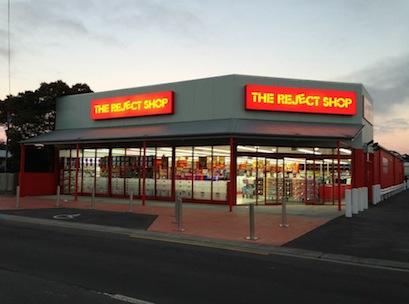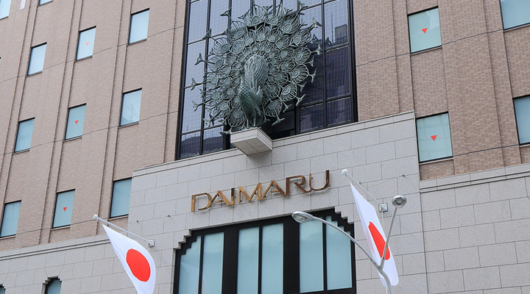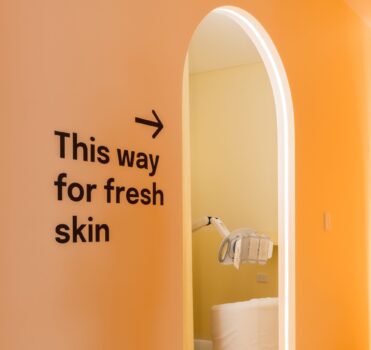Updated: 13:00 AEST
The Reject Shop (TRS) has ditched its time-tested advertising jingle in a new campaign designed to simplify its message, one of several initiatives undertaken by management during the half that have helped to stabilise its performance.
Unveiling its half-year result on Wednesday morning, The Reject Shop said that the creation of a more compelling offer and removing costs from the business had driven a 1.1 per cent increase in net profit to $17.7 million.
TRS managing director Ross Sudano said the result is an encouraging sign that the changes being made to the business, particularly around product mix, are beginning to deliver.
“We’ve done a lot of work and we’ve focused very heavily on understanding our customer, aligning our mix to what our customers are looking for,” Sudano told Inside Retail.
“We’re on a much more solid footing now than we we’re twelve months ago, our depth and understanding of our customers has increased tenfold and its pleasing to see them respond so well in the half.”
Earnings before interest, tax, depreciation and amortisation (EBITDA) increased by .8 per cent to $35.3 million for the six-months ended 31 December.
Top line sales increased by 1.1 per cent to $437.6 million and by .4 per cent on a comparable basis, with a weak first-quarter offset by a turnaround over the holiday period.
The result, alongside 1.3 per cent comparable sales growth in the new year, has buoyed management’s full-year expectations, with net profit now expected to be between $16.5 million and $17.5 million, compared to the $12.3 million booked for FY17.
Top-line growth in the first-half was driven by an increase in the number of transactions, rather than growth in basket size or average sale price, which went backwards compared to the PCP as customers sought out value.
“We’ve seen a changing buying behaviour during the first-half driven by a search for value, they’re looking for bargains and that’s driven…by the pressure our customers feel around disposable income,” Sudano earlier told investors and analysts.
“Our merchandise strategy is back on track, underpinned by a raft of significant changes, these include re-aligning our product mix towards key everyday items and branded products; and reducing the frequency of promotional variety by focusing on high impact events,” Sudano said.
“Most importantly, our customers have come back to The Reject Shop as they have positively responded to the increased availability of key everyday items.”
To better communicate its value proposition to customers, TRS simplified its message during the half, which as one investor noted, resulted in a move away from its traditional advertising jingle.
“We’ve raised the focus around value and delivering that through our media, our point of sale in store and our product mix in store, and we’re seeing customers respond to that quite quickly,” Sudano said.
“Our challenge has been to demonstrate that value to customers, so simplifying the message for a stronger focus on value is playing well to that core customer proposition.”
The jingle isn’t completely scrapped though and will remain a part of TRS’ marketing mix in some capacity moving forward.
Further opportunities
Sudano said while he’s now happy with the blend of products throughout stores on the whole, there remains a significant opportunity in addressing under performance in specific categories, which will be a focus in the second-half.
“I’m feeling confident that we have the blend right across the business, but there’s substantial opportunity for us now to build on that as a base and improve our merchandise within categories,” he said.
Cost saving initiatives have also been a highlight for the business over the last six-months, with a 50-basis point improvement in gross margin achieved on the back of better stock flow management.
Management said this has reduced the need for markdowns, freeing up cash to invest in price.
“Our strategy is around taking cost out of the business, which allows us to invest back into driving top-line sales growth – we’ll continue investing in price as we free up cash,” Sudano explained.
Sudano said that there’s still more work to be done in removing cost from the business, but that it would be harder to come by as the next set of changes, including supply chain initiatives, are structural in nature.
The discount variety chain opened nine new stores in the first-half, while three were relocated and three were closed.
Sudano said TRS won’t be reducing the size of its network, despite a 11 basis point increase in occupancy costs to sales during the half, but that management would maintain a “controlled” approach to expansion.
“We’ll continue to open stores, but only when we think there’s an opportunity from a customer perspective and the financial metrics make sense,” he said.
In the second-half, TRS intends to further its progress in reducing costs, improving its value-focused customer communication and address under-performing categories within stores.
“We are confident that we have built a new platform for the long-term growth of the business,” Sudano said.
Access exclusive analysis, locked news and reports with Inside Retail Weekly. Subscribe today and get our premium print publication delivered to your door every week.






